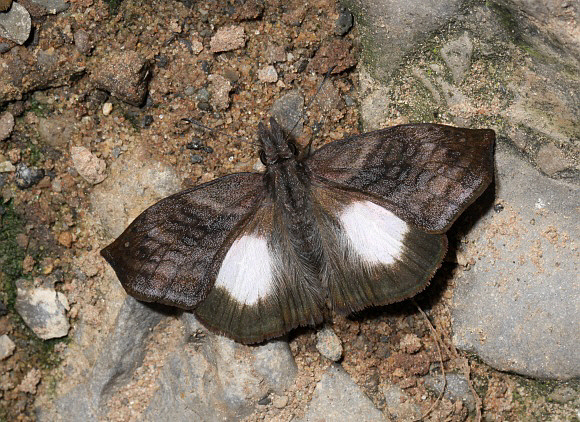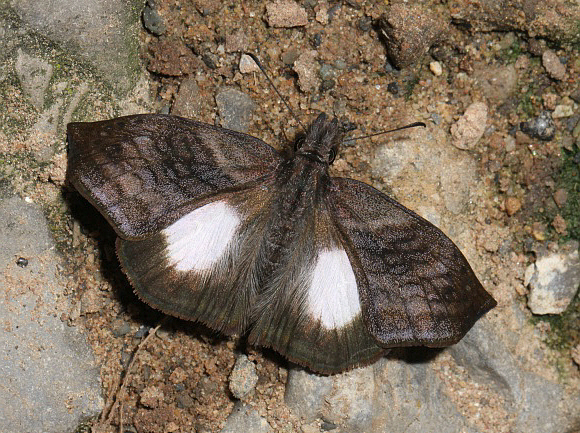
Introduction
The Pyrginae, popularly known as Flats or Spreadwings, are a cosmopolitan subfamily distributed across temperate and tropical habitats throughout the world. In the Americas there are 990 species.
Theagenes albiplaga is one of the most distinctive skippers in the neotropics, easily recognised by the large pure white circular patches on the hindwings, and the cryptic forewings, the apex of which is angled downwards when the butterfly is basking or at rest.
There are 2 other species in the genus: Theagenes aegides, a very similar species from Central America, once regarded as a subspecies of albiplaga; and dichrous, which lacks the white patches, and occurs in Argentina and southern Brazil.
Theagenes albiplaga occurs in Colombia, Venezuela, Ecuador and Peru.
Habitats
This is primarily a cloudforest species. It can be found at altitudes as low as 400m and as high as 2800m, but is most abundant between 1000-2000m.
Lifecycle
The lifecycle appears to be unrecorded. Generally, Pyrgine butterflies lay their eggs singly on either the upperside or underside of leaves. The larvae are typically dull green or brownish, with thin longitudinal lines along the back and sides, and with black shiny heads. They feed typically on low growing herbaceous plants, but a small percentage feed on the leaves of bushes or trees. The pupae are usually dark and smooth, with the wing cases in a contrasting tone or colour. They are normally formed within silken tents formed by spinning together the leaves of the foodplant.
Adult behaviour
The butterfly is usually encountered singly, or occasionally in two’s or three’s, and is only active in hot sunshine.
Males fly very rapidly, circling and zig-zagging in a very erratic fashion just above the surface of the ground. They periodically settle to imbibe moisture from damp sand, with wings outspread, but after a moment or two the forewings are drawn partially over the hindwings to conceal the white patches. This is presumably a case of flash-colouration, whereby an avian predator chasing after a butterfly with conspicuous white patches is suddenly left confused as the butterfly effectively disappears after covering the hindwings.

